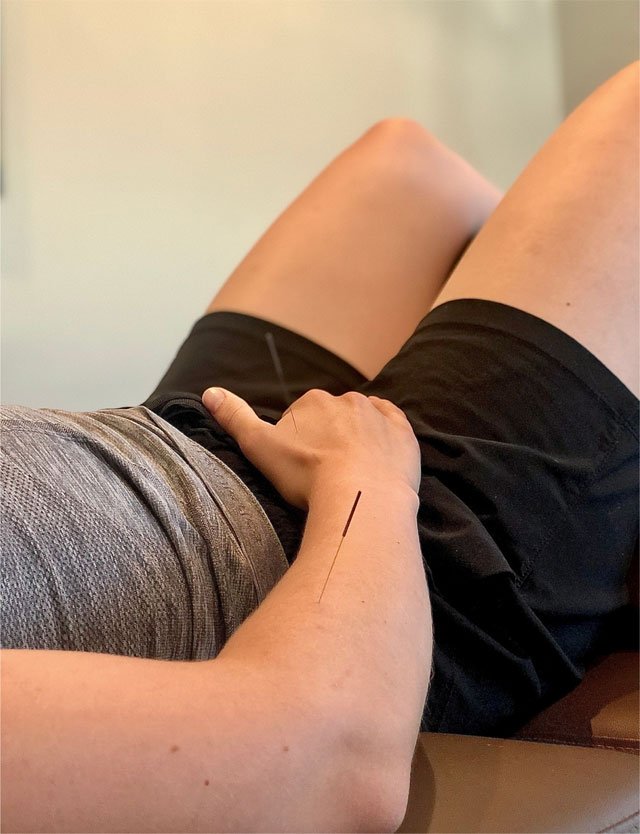Dry Needling / IMS (Intramuscular Stimulation)
Dry needling (also referred to as IMS) involves inserting a monofilament needle into a taut band of muscle/fascial/subcutaneous tissue to help with relieving pain, restoring function and neurophysiological balance. The use of dry needling follows a theory of neuromuscular physiology and pain science.
A comprehensive assessment is needed to determine the appropriateness of dry needling. If dry needling is deemed beneficial your physiotherapist will explain the purpose, risks, and benefits of dry needling in your session to ensure you are comfortable with the procedure. Dry needling intends to produce a “local twitch response” (an involuntary muscle contraction) when the needle is inserted into a trigger point. In some cases the needle will inserted and left for a few minutes (sustained technique) and other times your physiotherapist will use a piston technique (threading or tapping the needle) that lasts a shorter duration. It is expected that dry needling will produce a positive effect in one session but 6-8 session might be needed for the benefit to be sustained. Dry needling is part of a treatment plan that will also incorporate exercises, education, and activity modification to optimize the treatment.







